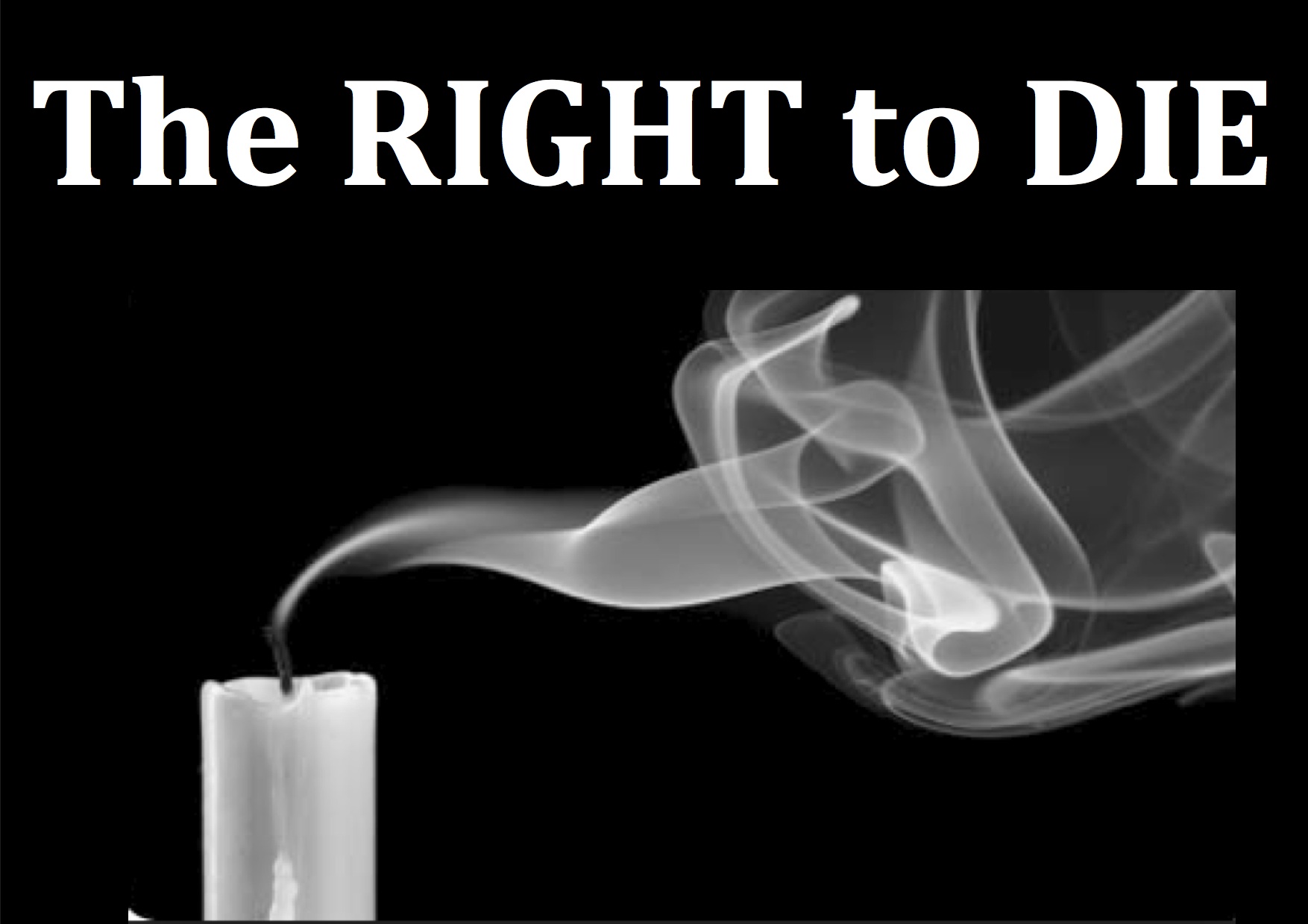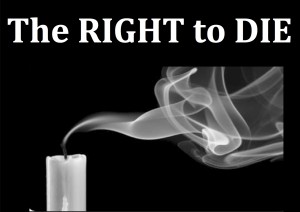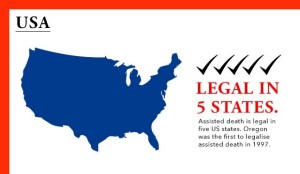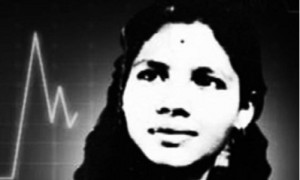In this blog post, Saanvi Singla, a student of University Institute of Legal Studies, Panjab University gives a comparative analysis of the Right to Die in India and the same right in the rest of the world.
Introduction
The common belief in the world is that the care of human life and happiness is the legitimate goal of good governance and not the destruction of human life. This statement stands in contradiction to the ‘Right to Die’. How can this be a right when the most precious right enshrined in our Constitution is the ‘Right to life’? How can a person be expected to give up the most essential right of all?
Right to die can be used to denote the concepts of Euthanasia, mercy killing, Physician Assisted Suicide (PAS), Suicide, etc. Though they are conceptually different, they fall within the same genre.
Euthanasia around the world
As of June 2016, human euthanasia is legal in the Netherlands, Belgium, Ireland, Colombia, and Luxembourg and assisted suicide is legal in Switzerland, Germany Japan, Canada, and Albania and some parts of USA[1].
The United States of America
Active euthanasia is illegal throughout the USA. Patients have the right to refuse medical treatment and to receive proper management of pain at their request (passive euthanasia), even if the patients’ choices accelerate their deaths. Additionally, futile or useless burdensome treatments, such as life-support machines, can be withdrawn under specified circumstances and the federal law and most state laws, only with the informed consent of the patient or, in the event of the incompetence of the patient, with the informed consent of the legal surrogate.
While active euthanasia is illegal throughout the US, assisted euthanasia is legal in Oregon, Washington, Vermont, California (effective from June 2016) and one county in New Mexico.
Australia
Assisted suicide was made legal in Australia for a period, but now it is not. In 1995, it was the world’s first euthanasia legislation. The Rights of the Terminally Ill Act 1995 was passed in the Northern region of Australia. Four patients died under the Act. The legislation was overturned by Australia’s Federal Parliament in 1997.
France
The controversy over legalizing euthanasia and physician-assisted suicide is not as big as in the United States because of the country’s ‘well-developed hospice care program.’ However, in 2000 the controversy over the uncontroversial topic was ignited by Vincent Humbert. After a car crash that left him ‘unable to ‘walk, see, speak, smell or taste’, he used the movement of his right thumb to write a book, ‘I Ask the Right to Die’ (Je VousDemande le Droit de Mourir) in which he voiced his desire to ‘die legally’. After his appeal had been denied, his mother assisted in killing him by injecting him with an overdose of barbiturates that put him into a coma, killing him two days later. Though his mother was arrested for aiding in her son’s death and later acquitted, the case did jumpstart a new legislation which states that when medicine serves ‘no other purpose than the artificial support of life’ they can be ‘suspended or not undertaken.’
Colombia
Despite its strict Roman Catholic history, in May 1997, Colombian courts allowed for the euthanasia of sick patients who had requested to end their lives. When one of their members brought a lawsuit to the Colombian Supreme Court against it, the court issued a 6 to 3 decision that ‘spelled out the rights of a terminal person to engage in voluntary euthanasia.’
Though physician-assisted suicide is legal, the country has not set away to document rules and regulations for doctors and patients that want to put an end to their lives. It is opposed on religious grounds by many Colombians; many patients have still been able to find doctors who could assist them in ending their lives.[2]
Indian perspective
Classical view
In India, the sanctity of life has been placed on the highest platform. The ‘right to life’ has been given the widest and the broadest meaning in our Constitution as well as by our capable judiciary. It has been rightly done as the ‘Right to Life’ does not mean bare animal existence; it means life with human dignity. Due to this, till date the judiciary of our country has staunchly stood against the implementation of ‘Right to Die’.
In Gian Kaur vs. State of Punjab[3], a five-judge Constitutional Bench held that the ‘right to life’ is naturally inconsistent with the ‘right to die’ as is ‘death’ with ‘life.’ Further, the right to life, which includes the right to live with human dignity, would mean the right to live up to the natural end of life. It can include ‘death with dignity’ but this does not mean the right to end life through unnatural termination of life.
In Naresh Marotrao Sakhre v. Union of India[4], Lodha J. affirmed that ‘Euthanasia or mercy killing is nothing but homicide whatever the circumstances in which it is effected.’
The meaning of the term ‘euthanasia’ is itself shrouded in ambiguity. It has been derived from the Greek word ‘EU Thanatos’ meaning ‘good death.’ To reiterate the judicial pronouncements in the Indian context, good or happy death would imply the ending of life the natural way.
In today’s world, euthanasia means intentional killing of someone whose life is not worth living anymore. Nowhere has it been mentioned that this term applies to ‘patients’ and not ‘people.’ Due to this reason, it has been considered that such legislation can have a disastrous impact on the society.
Technology has come to age
On the other hand, an irrefutable transition is evidenced in the augmentation of medicine and technology. What was considered as excessive in medicine fifty years ago has become ordinary and routine today. The idea here is that what is excessively burdensome and offers little hope for one may be less burdensome and more hopeful for a second patient in a different state of health.
Nowadays, one can save a person’s life and give him/her a ray of hope for a stable life in rarest of the rare cases. But some diseases and situations are still out of the hands of today’s medicine. In these cases, euthanasia or any other method can be used to end the suffering of the patient.
Modern View
Decriminalization of suicide has proved to be a turning point. It has opened up doors for new thinking and understanding of the ‘Right to Die’. The concept of suicide is covered under the ambit of ‘Right to Die’.
“Law Commission of India, in its 210th Report, had recommended that Section 309 (attempt to commit suicide) of IPC needs to be eliminated from the statute book. As law and order is a state subject, views of States/UTs were requested on the recommendations of the Law Commission. 18 states and 4 Union Territory administrations have supported that Section 309 of the IPC may be deleted. Keeping in view the responses from the states/UTs, it has been decided to delete Section 309 of IPC from the statute book.”[5]
In the historical case of Aruna Ramchandra Shanbaug v. The Union of India[6], the Indian Supreme Court has finally given a clear distinction between active and passive euthanasia. The Supreme Court has said that active euthanasia is completely illegal whereas passive euthanasia has been permitted depending from case to case.
Passive euthanasia is when the doctor switches off the support system on which a person is being kept alive or the body is deprived of all kinds of food, nutrition and water which will result in dehydration and starvation. In this way, the person will die a painful and an undignified death. Active euthanasia is when the doctor prescribes medicines and injections for a painless death. In active euthanasia the death is painless and dignified. If it is wrong to kill a person then killing a person in such an inhuman and barbaric manner is also wrong. The courts should consider this plea as the main purpose of euthanasia is a painless and a dignified death. The Supreme Court has not given any thought to the economic and monetary aspect.
This does not mean that the author is questioning the judgment given by the Supreme Court, but is merely suggesting a practical implementation of the said procedure.
Conclusion
If Article 21 of the Indian Constitution gives us a right to live a dignified life, then it should also give us the right to not live a less dignified life.
Euthanasia is a process through which a person can be given a humane and a dignified death. If the prescribed procedure is followed then, a patient and his/her family can be given relief. A person has to be careful regarding the implementation of euthanasia and should follow due procedure cited by the court for the implementation of passive euthanasia. Other aspects such as emotional and financial implications should also be kept in mind. Euthanasia is a way through which emotional suffering can come to an end. If there is no hope for the patient, then it is better to relieve both the patient and the family members of the emotional trauma. It is better to end it once and for all so that everyone is not suffering on a daily basis.
The financial aspect is also an important aspect. If money is being spent on some patient who has no scope of recovering in the future, then it is just a wasteful expenditure which will ultimately deteriorate the financial condition of the family. So due to these reasons, euthanasia is an effective procedure through which a person can end his/her suffering.
Footnotes:
[1]www.therichest.com/…/10-countries-where-euthanasia-and-assisted-suicide-are-legal/
[2]http://www.legalserviceindia.com/article/l404-Right-To-Die.html
[3] 1996 AIR 946, 1996 SCC (2) 648
[4] 1996 (1) BomCR 92, 1995 CriLJ 96, 1994 (2) MhLj 1850
[5]http://timesofindia.indiatimes.com/india/Government-decriminalizes-attempt-to-commit-suicide-removes-section-309/articleshow/45452253.cms
[6] (2011) 4 SCC 454
 Serato DJ Crack 2025Serato DJ PRO Crack
Serato DJ Crack 2025Serato DJ PRO Crack














 Allow notifications
Allow notifications



